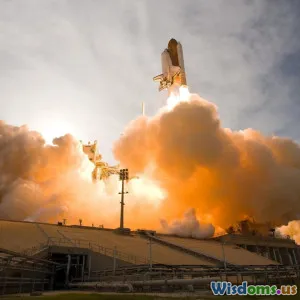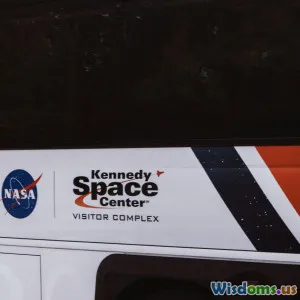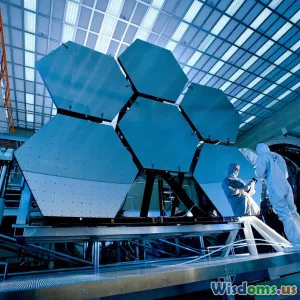
What Surprised Astronauts Most About Life in Orbit?
9 min read Discover what astronauts found most surprising about life aboard the International Space Station, from microgravity challenges to psychological effects. (0 Reviews)
What Surprised Astronauts Most About Life in Orbit?
Space is often described as the final frontier, a place where humankind pushes the boundaries of exploration and technology. Yet beyond the technology and scientific advances, what truly astonished astronauts wasn’t always the complexity of space travel itself but the unexpected realities of living in orbit. From bodily changes to psychological surprises and the nuances of daily habits, life aboard the International Space Station (ISS) reveals facets of human resilience and adaptation that few could imagine before going into space.
The Astonishing Reality of Microgravity
Defying Earth’s Physical Laws
One of the most immediately noticeable surprises for astronauts stepping into orbit is the experience of microgravity. While often referred to as "zero gravity," astronauts actually encounter microgravity, a condition where gravity's pull is vastly diminished but not absent. The sensation of floating freely was known theoretically, but living it day to day introduces persistent challenges.
Cosmonaut Yuri Malenchenko described microgravity as “both exhilarating and disorienting.” Activities that are mundane on Earth—such as eating, drinking, and even using the restroom—turn into complex tasks. For instance, liquids form floating spheres instead of pouring, requiring astronauts to drink from specially designed pouches.
The Challenge of Movement
Moving inside the ISS requires a radical rethinking of locomotion. Astronauts push off surfaces gently to glide, adjust their body angles and grip receptors in gloves and boots. The surprise is how effortless yet nuanced this is; too little or too much force can send them spinning uncontrollably. NASA astronaut Peggy Whitson, who holds records for total time spent in space, noted that mastering movement felt like learning an entirely new form of dance.
Physiological Surprises: How the Body Adapts
Space-Related Physical Changes
Surprisingly, the human body undergoes complex transformations in orbit. One of the most striking is the redistribution of bodily fluids — in microgravity, fluids that are usually pulled down to the lower body shift towards the upper body and head. Astronauts often report a puffy face and pressure in their sinuses, which is striking when compared to their pre-flight appearance.
Additionally, astronauts face muscle atrophy and bone loss without gravity's normal stresses. For example, bone density can decrease by up to 1-2% per month in orbit, mimicking osteoporosis. NASA combats this by scheduling rigorous daily exercise aboard the ISS using specialized equipment like resistive machines and treadmills with harnesses.
Shifts in Sensory Perception
Astronauts are often surprised by how their senses adjust in space. The vestibular system, which governs balance and spatial orientation, becomes confused without gravity to provide directional cues. This disorientation can cause space motion sickness in the early days of a mission, affecting roughly half of astronauts. Flight surgeon Dr. David Williams remarked that learning to trust visual cues over inner ear sensations was essential.
Moreover, taste buds reportedly dull in orbit — possibly due to fluid shifts causing nasal congestion — leading astronauts to crave spicier or stronger-flavored foods. This unexpected need influenced the development of specialized space food menus.
The Psychological and Social Dimension
Isolation and Confinement
Space living isn’t just physically challenging but psychologically intense. The limited size of the station, isolation from Earth, and separation from family present emotional hurdles. Early astronauts were surprised by the importance of mental health; coping mechanisms like video calls, messaging, and carefully planned leisure activities became essential.
NASA’s studies indicate that the interpersonal dynamics within the crew can strongly impact mission success. Russian cosmonaut Gennady Padalka emphasized how working through conflicts diplomatically in cramped quarters was crucial to maintaining harmony over long durations.
The Awe of Earth from Above
Perhaps one of the greatest surprises is a psychological and emotional one: the profound impact of seeing Earth as a complete, vibrant sphere from orbit. Many astronauts describe a cognitive shift known as the “Overview Effect,” a sense of interconnectedness and unity.
Astronaut Ron Garan reflected, “You realize the planet is fragile, and that life is precious and interconnected. It changes your perspective on everything.” This realization often inspires astronauts to become advocates for environmental stewardship and peace once back on Earth.
Daily Living—Unexpected Practical Surprises
Hygiene and Sleep
Simple routines like brushing teeth or taking a shower are not simple in space. Gravity can’t carry away toothpaste residues or shower water, so astronauts use rinseless body wipes and no-rinse shampoo.
Sleeping takes place in small individual sleep stations where astronauts strap themselves to a sleeping bag to avoid drifting. The absence of the usual sleep cues—temperature changes, the sun setting and rising—means that circadian rhythms can be disrupted. NASA mitigates this with strictly timed lighting designed to simulate Earth’s day/night cycle.
Waste Management Innovations
Managing human waste poses a significant engineering and psychological surprise. Toilets on the ISS use airflow suction rather than gravity to collect waste, and packing out solid waste becomes a meticulous process. Initial missions faced challenges, but continual innovation now keeps these systems efficient and sanitary.
Conclusion: Life in Orbit is a Lesson in Adaptation and Wonder
Astronauts embark on space missions expecting to face known technical challenges but often find the surprises are tied deeply to human adaptation—physical, psychological, and social. From the bewildering effects of microgravity to the emotional shifts engendered by the Overview Effect, life in orbit redefines our understanding of human resilience.
These insights fuel the ongoing development of space missions and influence how we prepare future spacefarers. At the same time, the astronauts’ reflections offer us on Earth a perspective on what it means to live in balance with our environment and with each other.
In essence, what surprised astronauts most wasn’t just the science or technology but the profound experience of living differently, seeing our world anew, and realizing that human adaptability is as remarkable as any spacecraft.
References:
- NASA Human Research Program: Effects of Microgravity
- Peggy Whitson’s official NASA biography and interviews
- "Overview Effect: Space Exploration and Human Evolution," by Frank White
- Interviews with astronauts from NASA and Roscosmos
- NASA’s insights on psychological health in space
Rate the Post
User Reviews
Popular Posts


















